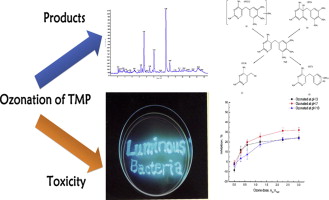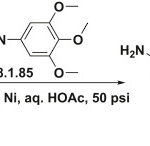Trimethoprim, often combined with sulfamethoxazole (TMP-SMX), is a widely prescribed antibiotic used to treat a variety of bacterial infections, including urinary tract infections, respiratory infections, and Pneumocystis jirovecii pneumonia. While generally well tolerated, trimethoprim can lead to serious and potentially life-threatening toxicity in certain individuals, particularly those with renal impairment, elderly patients, or those on interacting medications. Understanding the risk factors, clinical presentation, diagnostic strategies, and management approaches is essential for safe and effective use.

Mechanism of Action and Pharmacokinetics
Trimethoprim is a dihydrofolate reductase inhibitor that interferes with bacterial folic acid synthesis, resulting in bacteriostatic activity. It is primarily excreted by the kidneys and has a half-life of approximately 8–10 hours, which can be prolonged in patients with renal dysfunction. Its ability to mimic potassium-sparing diuretics and impair folate metabolism underlies many of its toxic effects.
Risk Factors for Trimethoprim Toxicity
- Advanced age
- Renal impairment or chronic kidney disease
- Concurrent use of ACE inhibitors, ARBs, potassium-sparing diuretics, or NSAIDs
- High-dose or prolonged therapy
- Folate deficiency or malabsorption syndromes
- Underlying hematologic or immunologic disorders
These factors predispose patients to various toxicities, including metabolic disturbances, renal dysfunction, and hematologic abnormalities.
Common and Serious Clinical Manifestations
1. Hyperkalemia (Elevated Serum Potassium)
Trimethoprim reduces potassium excretion by acting like amiloride, inhibiting sodium channels in the distal nephron.
Clinical signs:
- Muscle weakness
- Paresthesia
- Bradycardia
- Cardiac arrhythmias (peaked T waves, asystole)
At-risk population: Elderly, CKD, those on spironolactone, ACE inhibitors
2. Renal Toxicity
Though uncommon, trimethoprim may impair renal function through:
- Reversible elevation in serum creatinine: Inhibition of creatinine tubular secretion without actual GFR reduction
- Acute kidney injury (AKI): Especially in volume-depleted patients or with NSAID co-administration
- Interstitial nephritis: Rare, but possible hypersensitivity reaction
3. Folate Deficiency and Hematologic Toxicity
Trimethoprim interferes with folate metabolism, particularly at high doses or with prolonged use.
Potential outcomes:
- Megaloblastic anemia
- Neutropenia
- Thrombocytopenia
- Pancytopenia in severe cases
Populations at risk: Pregnant women, alcoholics, elderly, malnourished
4. Dermatological and Hypersensitivity Reactions
While more associated with sulfamethoxazole, trimethoprim can contribute to:
- Rash
- Stevens-Johnson syndrome (SJS)
- Toxic epidermal necrolysis (TEN)
- Drug fever
5. Lactic Acidosis and Neurologic Effects
In rare instances, especially in patients with renal dysfunction:
- Confusion
- Seizures
- Lethargy
- Lactic acidosis due to mitochondrial toxicity
Diagnostic Approach to Suspected Trimethoprim Toxicity
Proper assessment involves correlating symptoms with drug exposure history and conducting targeted investigations.
Suggested Workup:
| Test | Purpose |
|---|---|
| Serum electrolytes (especially K+) | Detect hyperkalemia |
| Renal function tests (BUN, Creatinine) | Monitor nephrotoxicity |
| Complete blood count (CBC) | Evaluate for anemia, leukopenia, thrombocytopenia |
| Serum folate level | Assess folate status |
| ECG | Detect potassium-related cardiac changes |
| Urinalysis | Assess renal tubular function |
Treatment and Management Strategies
Management depends on the severity of toxicity and specific manifestations.
General Measures
- Discontinue trimethoprim immediately upon suspicion of toxicity
- Supportive care including IV fluids and electrolyte management
Management of Hyperkalemia
- Calcium gluconate (if ECG changes present)
- IV insulin with glucose to shift K+ intracellularly
- Beta-agonists (e.g., albuterol) as adjunct
- Loop diuretics if volume status permits
- Dialysis in severe or refractory cases
Treatment of Hematologic Effects
- Folate supplementation (oral or parenteral folinic acid/leucovorin)
- Discontinue co-suspected myelosuppressive drugs
- Transfusions for severe anemia or thrombocytopenia
- Granulocyte colony-stimulating factor (G-CSF) in neutropenic patients
Management of Renal Dysfunction
- Hydration
- Avoidance of nephrotoxic drugs
- Renal replacement therapy if indicated
Managing Dermatologic and Neurologic Reactions
- Antihistamines or corticosteroids for milder rashes
- Hospitalization and IVIG/plasmapheresis for severe cases like SJS/TEN
- Neurological monitoring in patients with altered mental status
Prevention and Risk Mitigation
To reduce the incidence of trimethoprim toxicity, clinicians should:
- Avoid TMP in high-risk patients, especially those with CKD or on ACE inhibitors
- Monitor serum potassium and renal function during therapy
- Use lowest effective dose for the shortest duration
- Educate patients about signs of toxicity such as muscle weakness, palpitations, or rash
- Ensure folate supplementation if used long-term or in folate-deficient individuals
Frequently Asked Questions:
Q1. Can trimethoprim cause kidney damage?
Yes, it can cause reversible elevation in creatinine or, less commonly, acute kidney injury due to volume depletion or hypersensitivity.
Q2. What is the most dangerous side effect of trimethoprim?
Severe hyperkalemia, which can lead to fatal cardiac arrhythmias, is among the most life-threatening complications.
Q3. How quickly can trimethoprim toxicity occur?
Toxicity can appear within days in susceptible individuals, especially those with impaired renal function or drug interactions.
Q4. Is folic acid supplementation necessary with trimethoprim?
In certain patients, especially those on long-term therapy or with folate deficiency risk, supplementation may be advisable.
Q5. How is trimethoprim toxicity diagnosed?
Diagnosis is clinical, supported by lab findings such as elevated potassium, creatinine, or hematologic abnormalities, and improvement after discontinuation.

